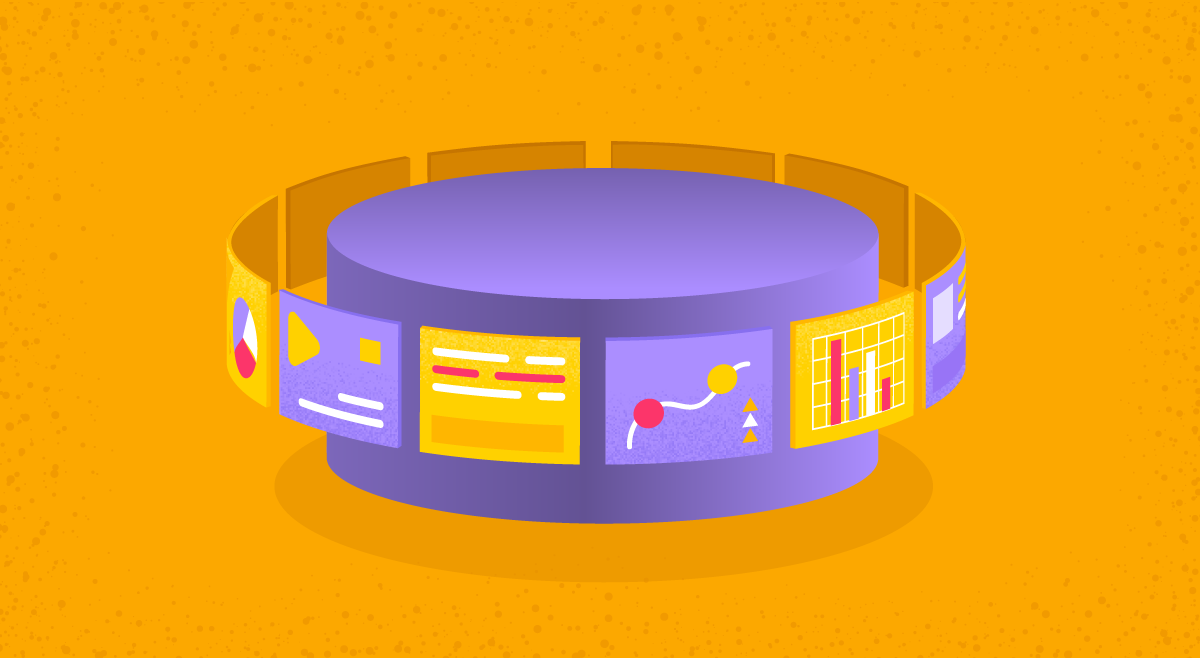
The virtual booth. You are either for them or against them.
On the one hand, you need to add value for sponsors and exhibitors. And yet, on the other hand, simply recreating the physical booth virtually…. will not work. The virtual experience needs more.
So we decided to take a deeper look.
First, we center on the virtual booth definition. Then we give examples. And finally, we give you our POV.
(TL;DR focus on how to drive meaningful connections with the audience)
So without further ado, here we go.
Virtual booth definition
If you search the web for a definition, here is what you might get back:
“A virtual booth typically has several icons which can trigger different responses upon the click of the mouse. For example, visitors might initiate instant communication with the exhibitor via an instant message, email or a voice-call.”
Thank you Wikipedia.
Pretty enticing right? Talk about event experience 😀
Perhaps we need to delve a little deeper.
We could define a virtual booth as the following:
A virtual booth is a space within a larger virtual event. The aim is to generate meaningful conversation with attendees. A variety of assets can be displayed. These include static text, logos, banners, video and even a chatbot. The virtual booth may be 3D or page-based design. Either way, the attendee can engage directly with the exhibitor. Conversations can be instant, a contact form or simply be a link to more. Often, virtual booth exhibitors will host live discussions or demos.
Okay. Now we are getting somewhere.
But what does a virtual booth look like?
Virtual booth examples
So now we know what a virtual booth is. What do they look like?
They can come in many formats. From page base designs to simple or intricate 3D designs.
The options available to you will depend. Mostly on the virtual event platform where your virtual booth will be hosted. Typically we can think of two types of virtual event platform, and booth:
- Platforms that were in direct competition to in-person events. These platforms typically offer 3D booth modeling. They have one goal in mind: convince people to switch from in-person to virtual. Hence they focus on recreating the in-person booth.
- Platforms that re-thought the virtual booth. These platforms mostly focus on a page based design. Just like a website or LinkedIn profile. They focus on driving connections between exhibitors and attendees.
Here we see an example of a simple 3D booth (via vFairs):
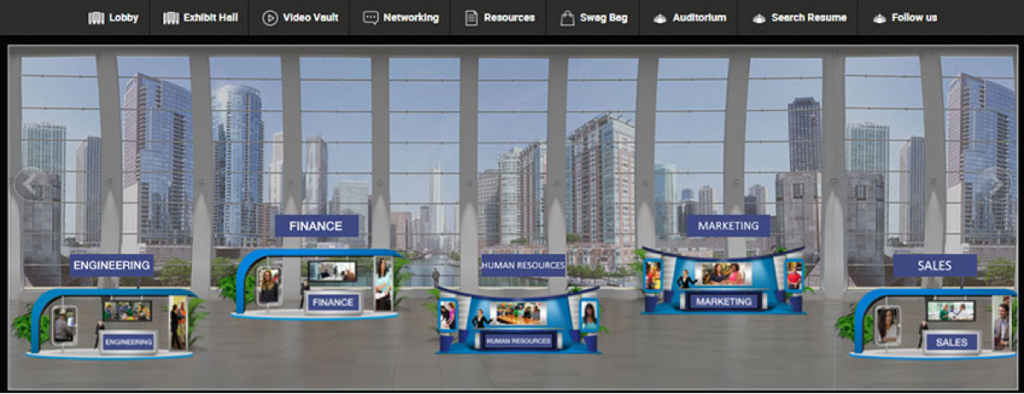
Here is a more elegant 3D virtual booth (via Infinity Marketing):
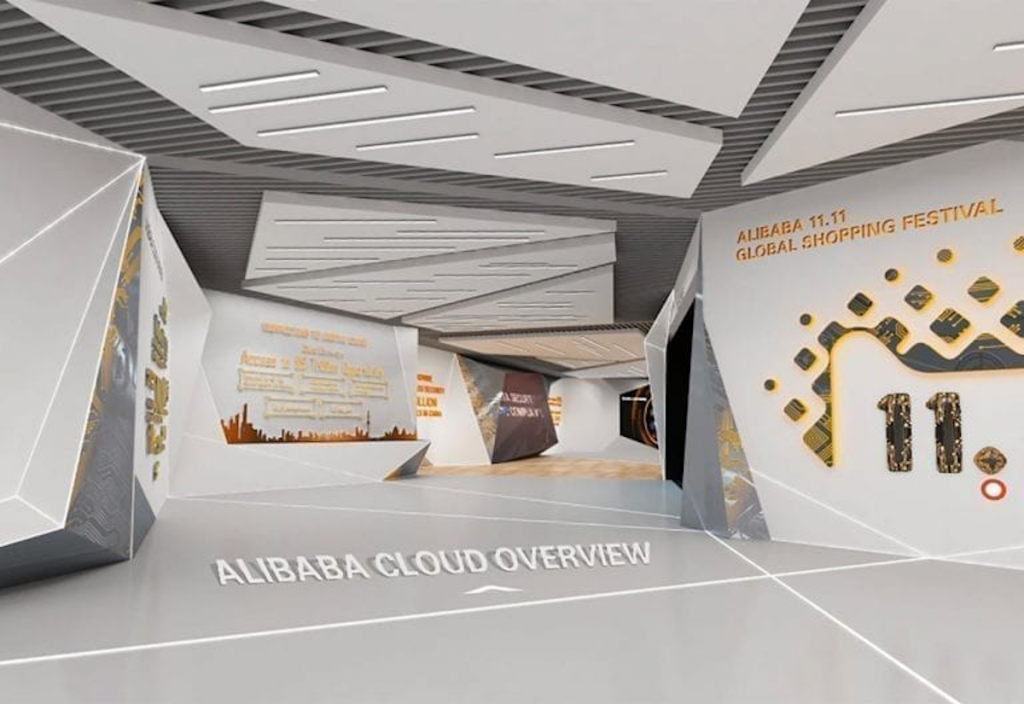
And here is a page-based design (via SpotMe):
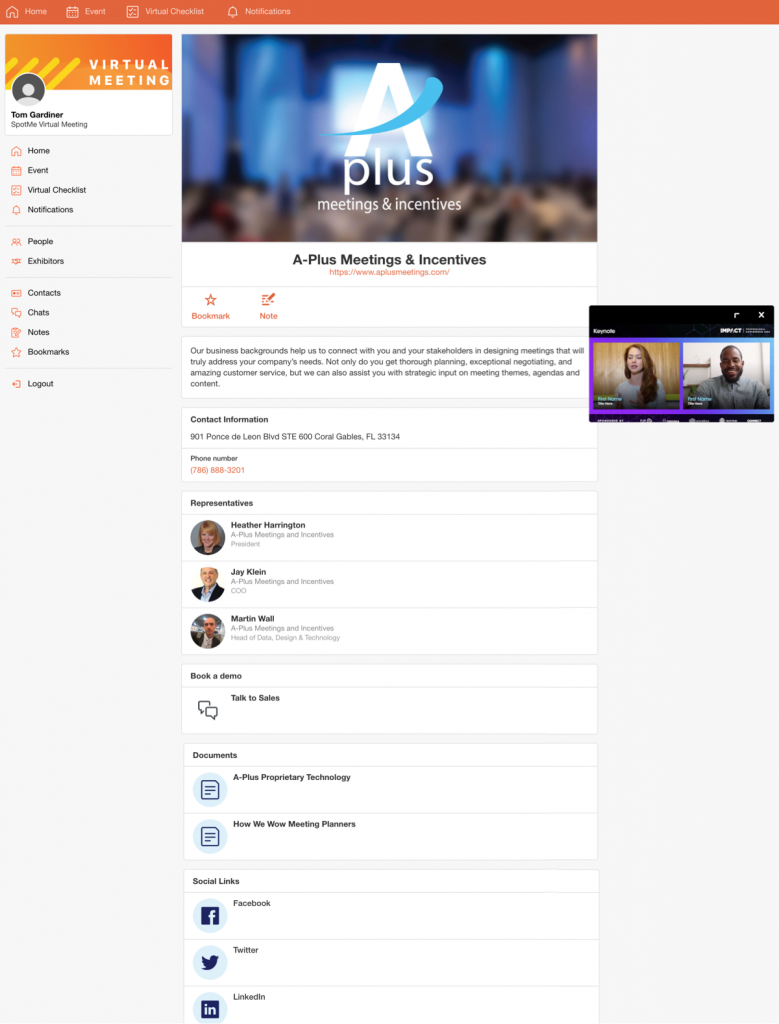
Why the virtual booth works
So why would you want a virtual booth? Great question.
Here we explore the top 5 reasons for having a booth:
- You get more leads1 – having a virtual booth means not only a presence but skin in the game. A booth is the glue that holds the pre, during and post-marketing together. It puts your brand in plain view of the attendee.
- Virtual means 24/72 – going down the virtual route means you have a long-lasting presence. Where in-person is a moment in time, virtual can be longer.
- Virtual is less expensive2 – choosing to invest in a booth virtually is likely to be a less costly effort. So less spent and more back… sounds great. Plus you probably already planned to spend some money on exhibiting anyway 😀
- Chance to connect3 – usually a booth will include a live chat or even live demo. Making it easy for attendees to ask questions. Plus there is something less scary about virtual than in-person.
- Virtual means a larger audience3 – one of the main benefits of going virtual is reach. More people can attend. Which means more virtual traffic for your booth.
Why the virtual booth does not work
So why would you not want a virtual booth?
Here are the top reasons why a booth might not be the answer:
- All the best communication happens away from the booth4 – for some exhibitors, the booth is just a place to meet. The real conversations happen away from the booth. And virtual is no different.
- 3D booths can be a distraction – trying to recreate the in-person booth is missing the objective. The focus for any booth should be for attendees to discover your brand. And if needed, follow-up with a discussion. Spending time making 3D models potentially takes away from achieving this goal.
- Poor promotion efforts5 – placing your hope in a booth alone, is not going to cut it. The opportunity that virtual presents is the chance to learn and connect with the attendee. This is about multi-channel, multi-touch marketing.
- Is the audience truly committed4 – if you have a booth, will the audience be present? One of the main concerns with virtual is the lack of attendee engagement. So be careful where you place your bets.
- Will virtual audiences visit my booth5 – It remains to be seen if virtual audiences will actually spend time at booths. If virtual attention spans are smaller than in-person, and distractions more plentiful…. Will people visit?
Our POV
At SpotMe we have always focused on connection. Everything we have done for the past 20 years is around this.
For us, the discussion around the booth is no different. The overall objective is connection.
Specifically, the connection between a brand and the audience.
Our POV is that you need to focus on helping sponsors connect with the audience.
The best conversations (and connections) happen away from the booth. Find creative ways to be a part of topical discussions. What we need here is a LinkedIn or digital mindset.
This is why we encourage exhibitors or sponsors to use the feed. Perhaps moderate a topic discussion? Post video to the feed? Or host live roundtable discussions? Even use chatbots to help engage the audience.
Another thing that can work is sending swag. A carefully curated swag experience from a sponsor can leave a lasting impression.
If you head to our free online trial experience, you can see what our sponsor pages and feed look like.
Here is how to build your sponsor pages with SpotMe.
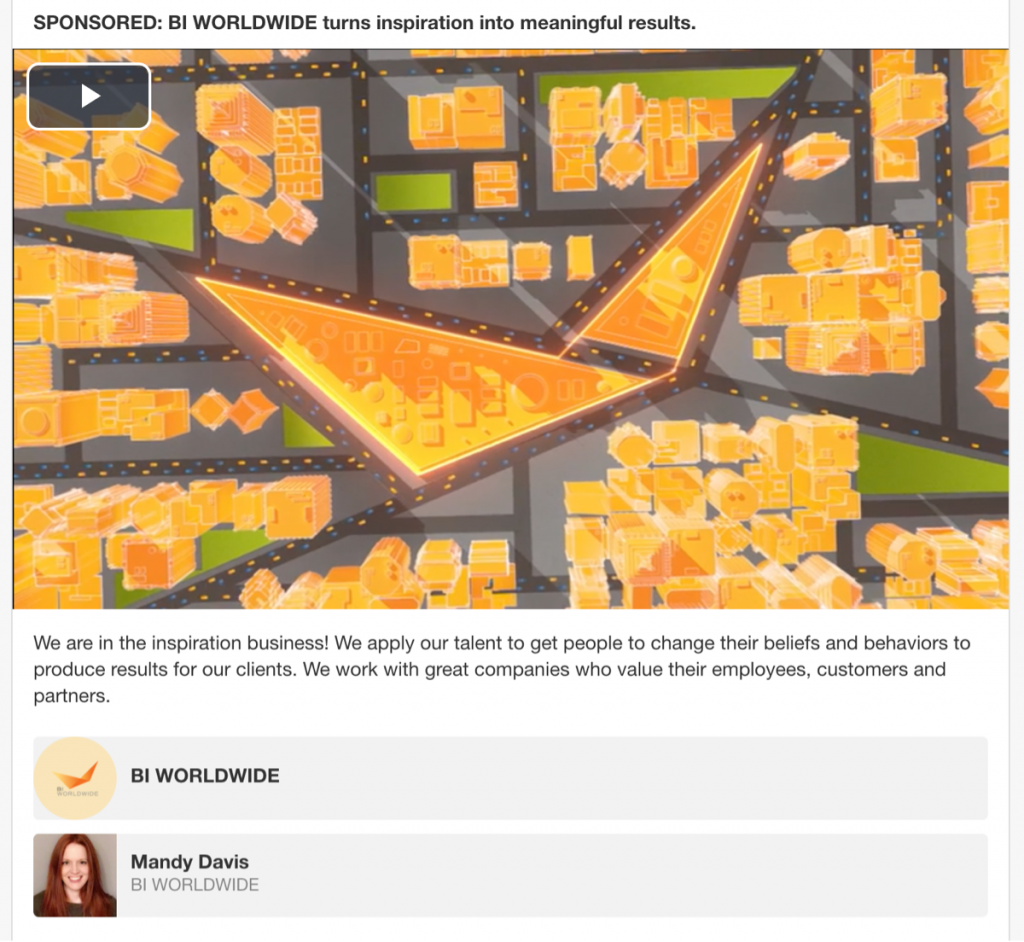
Bottom line: virtual offers an opportunity to reach a wider audience. But you need to be part of ‘the’ conversation. And not just sitting at the booth waiting for the action.
Conclusion
The decision on virtual booths is going to depend on your goals. If you think that you can generate meaningful conversations by having a booth, then it might be worth it. On the other hand, could the money and time be better spent elsewhere? Are there other ways to achieve your goals?
Whatever decision you make, one thing is clear. The virtual world needs a multi-touch and multi-channel effort to reach your audience. Whether a virtual booth is a part of that is up to you.
Still wondering about the virtual booth? Check out our interview with industry expert, Ray Bugg.


